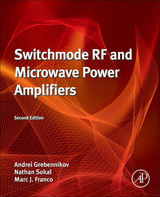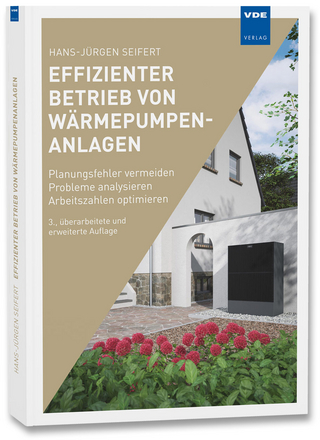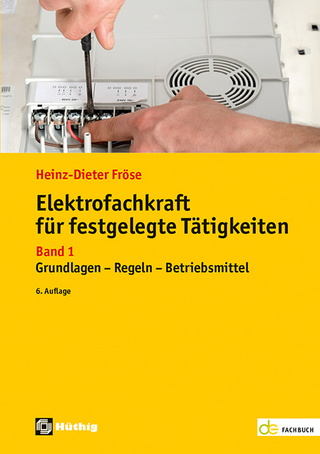
Switchmode RF Power Amplifiers
Newnes (an imprint of Butterworth-Heinemann Ltd ) (Verlag)
978-0-7506-7962-6 (ISBN)
- Titel erscheint in neuer Auflage
- Artikel merken
A majority of people now have a digital mobile device whether it be a cell phone, laptop, or blackberry. Now that we have the mobility we want it to be more versatile and dependable; RF power amplifiers accomplish just that. These amplifiers take a small input and make it stronger and larger creating a wider area of use with a more robust signal.Switching mode RF amplifiers have been theoretically possible for decades, but were largely impractical because they distort analog signals until they are unrecognizable. However, distortion is not an issue with digital signals—like those used by WLANs and digital cell phones—and switching mode RF amplifiers have become a hot area of RF/wireless design. This book explores both the theory behind switching mode RF amplifiers and design techniques for them.
Dr. Andrei Grebennikov is a Senior Member of the IEEE and a Member of Editorial Board of the International Journal of RF and Microwave Computer-Aided Engineering. He received his Dipl. Ing. degree in radio electronics from the Moscow Institute of Physics and Technology and Ph.D. degree in radio engineering from the Moscow Technical University of Communications and Informatics in 1980 and 1991, respectively.He has obtained a long-term academic and industrial experience working with the Moscow Technical University of Communications and Informatics, Russia, Institute of Microelectronics, Singapore, M/A-COM, Ireland, Infineon Technologies, Germany/Austria, and Bell Labs, Alcatel-Lucent, Ireland, as an engineer, researcher, lecturer, and educator.He lectured as a Guest Professor in the University of Linz, Austria, and presented short courses and tutorials as an Invited Speaker at the International Microwave Symposium, European and Asia-Pacific Microwave Conferences, Institute of Microelectronics, Singapore, and Motorola Design Centre, Malaysia. He is an author or co-author of more than 80 technical papers, 5 books, and 15 European and US patents. In 1989, Mr. Sokal was elected a Fellow of the IEEE, for his contributions to the technology of high-efficiency switching-mode power conversion and switching-mode RF power amplification. In 2007, he received the Microwave Pioneer award from the IEEE Microwave Theory and Techniques Society, in recognition of a major, lasting, contribution development of the Class-E RF power amplifier. In 2011, he was awarded an honorary doctorate from the Polytechnic University of Madrid, Spain, for developing the high-efficiency switching-mode Class-E RF power amplifierIn 1965, he founded Design Automation, Inc., a consulting company doing electronics design review, product design, and solving ‘‘unsolvable’’ problems for equipment-manufacturing clients. Much of that work has been on high-efficiency switching-mode RF power amplifiers at frequencies up to 2.5 GHz, and switching-mode dc-dc power converters. He holds eight patents in power electronics, and is the author or co-author of two books and approximately 130 technical papers, mostly on high-efficiency generation of RF power and dc power.During 1950–1965, he held engineering and supervisory positions for design, manufacture, and applications of analog and digital equipment.He received B.S. and M.S. degrees in Electrical Engineering from the Massachusetts Institute of Technology, Cambridge, Massachusetts, in 1950.He is a Technical Adviser to the American Radio Relay League, on RF power amplifiers and dc power supplies, and a member of the Electromagnetics Society, Eta Kappa Nu, and Sigma Xi honorary professional societies. Marc J. Franco holds a Ph.D. degree in electrical engineering from Drexel University, Philadelphia. He is currently with RFMD, Technology Platforms, Component Advanced Development, Greensboro, North Carolina, USA, where he is involved with the design of advanced RF integrated circuits and integrated front-end modules. He was previously with Linearizer Technology, Inc. Hamilton, New Jersey, where he led the development of advanced RF products for commercial, military and space applications.Dr. Franco is a regular reviewer for the Radio & Wireless Symposium, the European Microwave Conference and the MTT International Microwave Symposium. He is a member of the MTT-17 HF-VHF-UHF Technology Technical Coordination Committee and has co-chaired the IEEE Topical Conference on Power Amplifiers for Radio and Wireless Applications. He is a Senior Member of the IEEE.His current research interests include high-efficiency RF power amplifiers, nonlinear distortion correction, and electromagnetic analysis of structures.
Preface1. Power Amplifier Design Principles1.1. Spectral and time domain analyses1.2. Basic classes of operation: A, AB, B, C1.3. High frequency conduction angle1.4. Active device models1.5. Push-pull power amplifiers1.6. Gain and stability1.7. Effect of collector capacitance1.8. Parametric oscillationsReferences2. Class D power amplifiers2.1. Switched-mode power amplifiers with resistive load2.2. Complementary voltage-switching configuration2.3. Transformer-coupled voltage-switching configuration2.4. Symmetrical current-switching configuration2.5. Transformer-coupled current-switching configuration2.6. Voltage-switching configuration with reactive load2.6. Drive and transition time2.8. Practical Class D power amplifier implementationReferences3. Class F power amplifiers3.1. Biharmonic operation mode3.2. Idealized Class F mode3.3. Class F with maximally flat waveforms3.4. Class F with quarterwave transmission line3.5. Effect of saturation resistance and shunt capacitance3.6. Load networks with lumped elements3.7. Load networks with transmission lines3.8. LDMOSFET power amplifier design examples3.9. Practical RF and microwave Class F power amplifiersReferences4. Inverse Class F mode4.1. Biharmonic operation mode4.2. Idealized inverse Class F mode4.3. Inverse Class F with quarterwave transmission line4.4. Load networks with lumped elements4.5. Load networks with transmission lines4.6. LDMOSFET power amplifier design example4.7. Practical implementationReferences5. Class E with shunt capacitance5.1. Effect of mistuned resonant circuit5.2. Load network with shunt capacitor and series filter5.3. Matching with standard load5.4. Effect of saturation resistance5.5. Driving signal and finite switching time5.6. Effect of nonlinear shunt capacitance5.7. Push-pull operation mode5.8. Load network with transmission lines5.9. Practical RF and microwave Class E power amplifiersReferences6. Class E with finite dc-feed inductance6.1. Class E with one capacitor and one inductor6.2. Generalized Class E load network with finite dc-feed inductance6.3. Sub-harmonic Class E6.4. Parallel-circuit Class E6.5. Even-harmonic Class E6.6. Effect of bondwire inductance6.7. Load network with transmission lines6.8. Broadband Class E6.9. Power gain6.10. CMOS Class E power amplifiersReferences7. Class E with quarterwave transmission line7.1. Load network with parallel quarterwave line7.2. Optimum load network parameters7.3. Load network with zero series reactance7.4. Matching circuit with lumped elements7.5. Matching circuit with transmission lines7.6. Load network with series quarterwave line and shunt filterReferences8. Alternative and mixed-mode high efficiency power amplifiers8.1. Class D/E power amplifier8.2. Class E/F power amplifiers8.3. Biharmonic Class EM power amplifier8.4. Inverse Class E power amplifiers8.5. Harmonic-control design techniqueReferences9. Computer-aided design of switching-mode power amplifiers9.1. Basic principles and limitations9.2. HEPA Plus CAD program9.3. Effect of load-impedance variation with frequency9.4. HEPA Plus CAD examples for Class D and E9.5. Class E power amplifier design using SPICE 9.6. ADS circuit simulator and its applicability9.7. ADS CAD design examples for Class E power amplifiersReferences
| Erscheint lt. Verlag | 9.8.2007 |
|---|---|
| Reihe/Serie | Communications Engeneering Series |
| Verlagsort | Oxford |
| Sprache | englisch |
| Maße | 191 x 235 mm |
| Gewicht | 1040 g |
| Themenwelt | Technik ► Elektrotechnik / Energietechnik |
| ISBN-10 | 0-7506-7962-X / 075067962X |
| ISBN-13 | 978-0-7506-7962-6 / 9780750679626 |
| Zustand | Neuware |
| Informationen gemäß Produktsicherheitsverordnung (GPSR) | |
| Haben Sie eine Frage zum Produkt? |
aus dem Bereich



